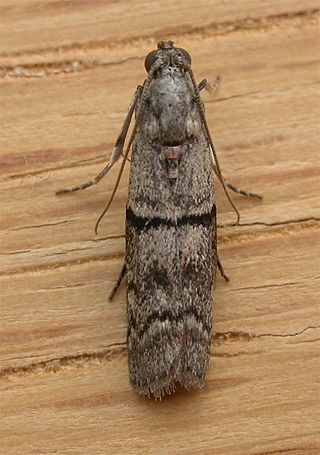| Gymnancyla barbatella | |
|---|---|
| Scientific classification | |
| Domain: | Eukaryota |
| Kingdom: | Animalia |
| Phylum: | Arthropoda |
| Class: | Insecta |
| Order: | Lepidoptera |
| Family: | Pyralidae |
| Genus: | Gymnancyla |
| Species: | G. barbatella |
| Binomial name | |
| Gymnancyla barbatella Erschoff, 1874 | |
| Synonyms | |
| |
Gymnancyla barbatella is a species of snout moth in the genus Gymnancyla . It was described by Nikolay Grigoryevich Erschoff in 1874 and is known from Russia, [1] Uzbekistan and the Gobi Desert.

